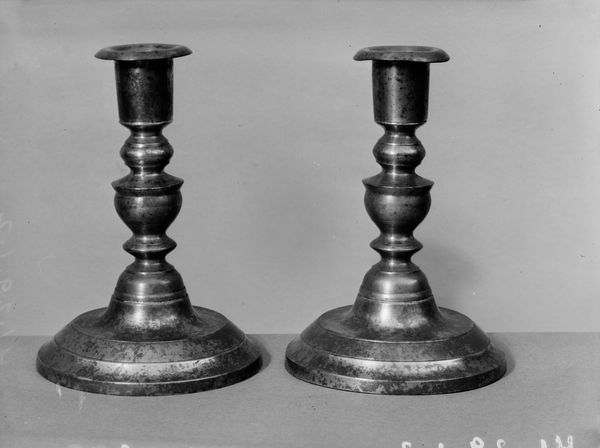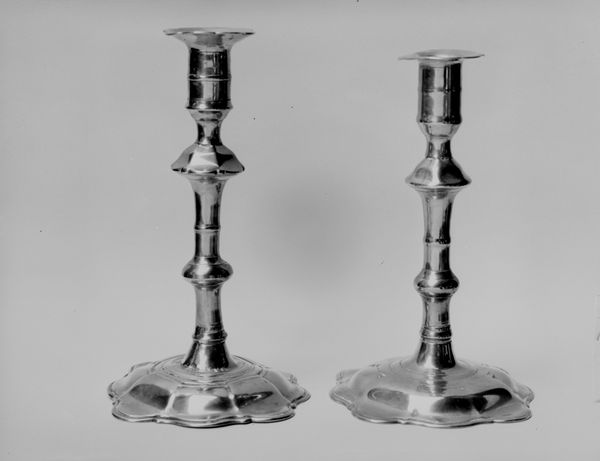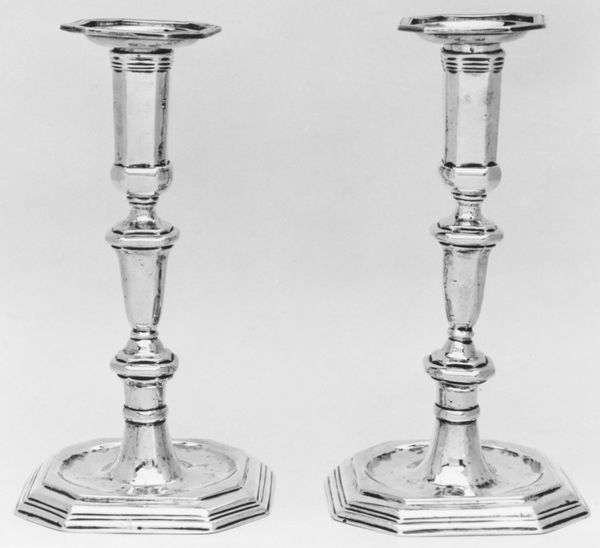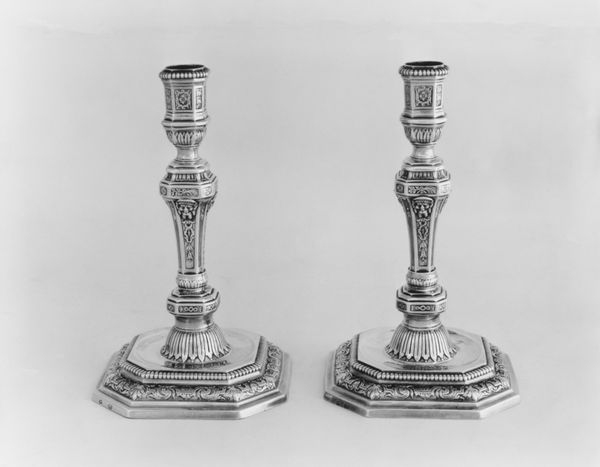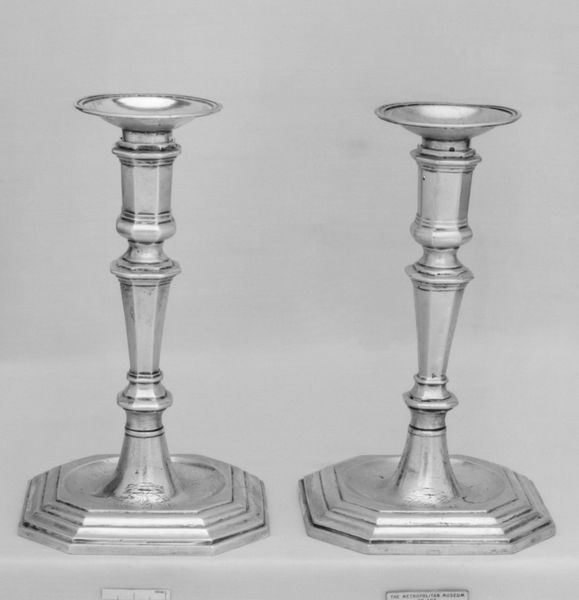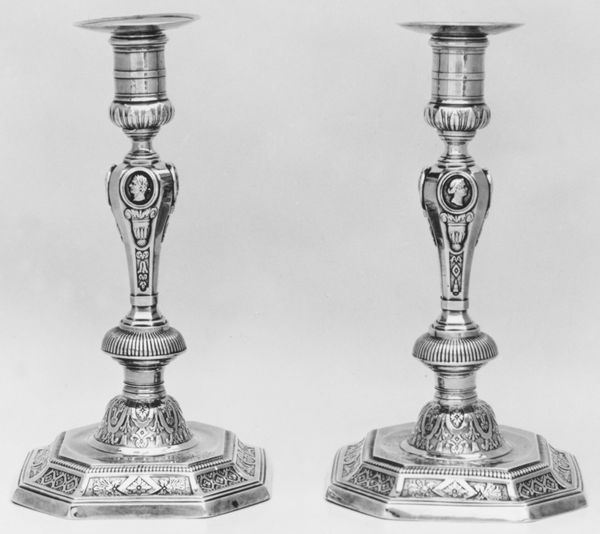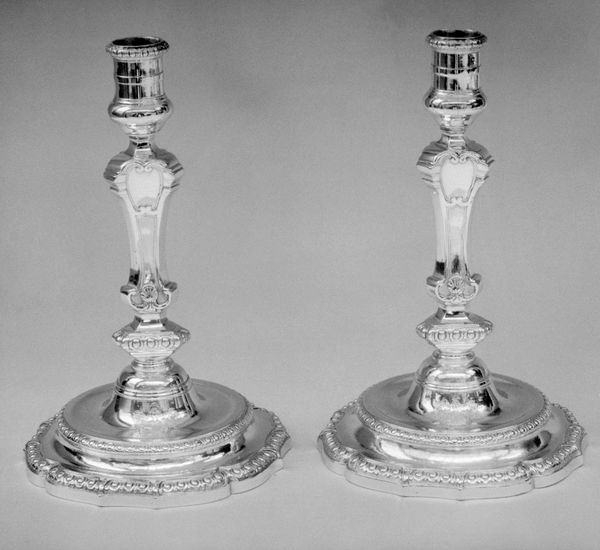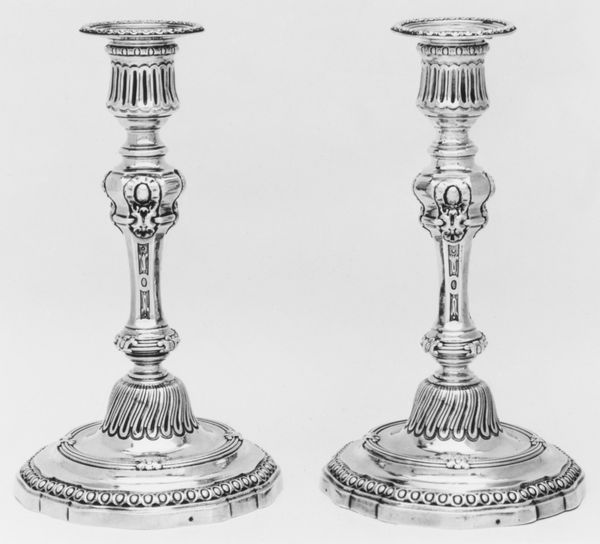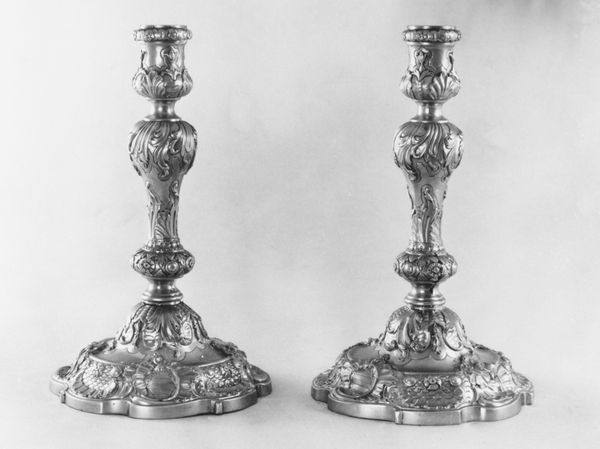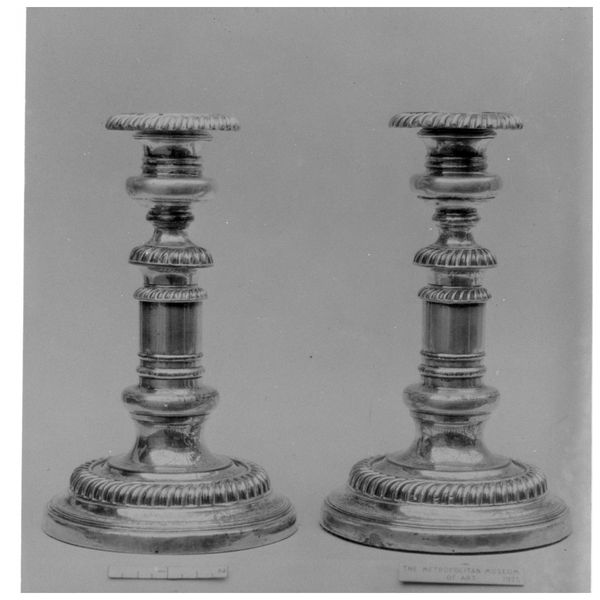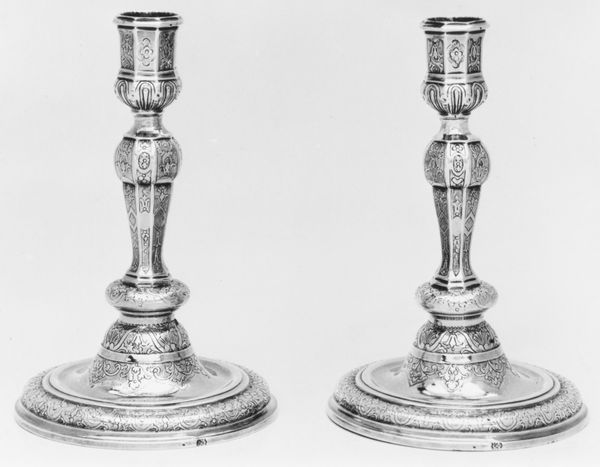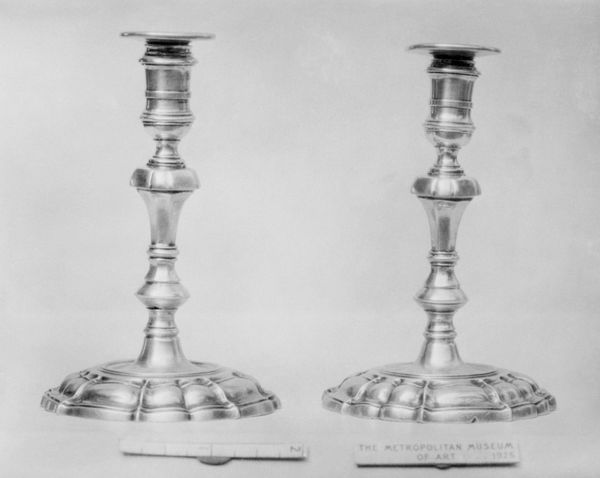
#
3d sculpting
#
3d printed part
#
sculpture
#
sculptural image
#
black and white theme
#
unrealistic statue
#
3d shape
#
framed image
#
black and white
#
united-states
#
statue
Dimensions: H. 9 in. (22.9 cm)
Copyright: Public Domain
Editor: So, we’re looking at a photograph of candlesticks, likely made between 1832 and 1835. They're currently held at the Metropolitan Museum of Art. They appear to be pewter or some kind of metal. What stands out to you about these, Professor? Curator: I see a fascinating artifact, less about pure artistry and more about the labor and materiality involved in creating these candlesticks in the 1830s. Let’s consider the context. This period saw the rise of industrial production. How do you think that shift impacted the production and consumption of objects like these? Editor: I imagine it made them more accessible, perhaps less precious than handcrafted items from earlier eras? Were they mass-produced or still individually crafted? Curator: That's a crucial question. Were these made in a factory, relying on a division of labor, or by individual artisans who controlled the entire process? Examining the candlesticks closely – the joins, the surface finish – might reveal clues. Are there imperfections suggesting handcrafting or uniform features pointing towards industrial production? Editor: Hmm, I’d need to examine them in person to see the small details. So, you’re less interested in their aesthetic value and more in how they fit into the broader system of production and consumption at the time? Curator: Precisely. These candlesticks become interesting when viewed as commodities embedded in social and economic relationships. Their value isn't just about their visual appeal, but their place within networks of production, distribution, and use. What was the value placed on manufactured goods versus handmade at the time? And for whom were such goods intended? Editor: That gives me a whole new way of looking at something as simple as a candlestick! It’s not just decoration; it's evidence of a changing world. Curator: Indeed! It invites us to consider the often-invisible processes and relationships that shape the objects surrounding us.
Comments
No comments
Be the first to comment and join the conversation on the ultimate creative platform.
